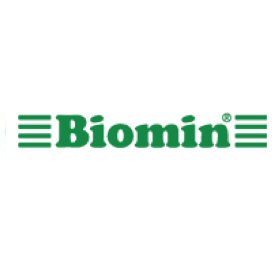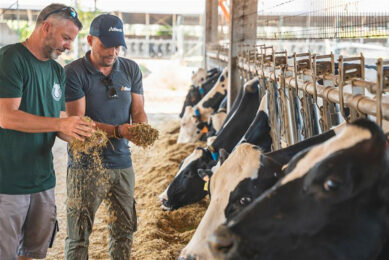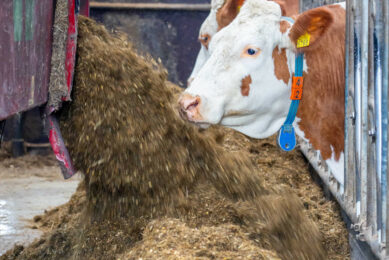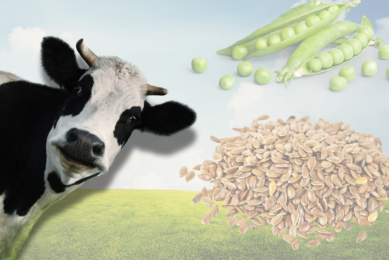Mycotoxins in dairy – an underestimated problem
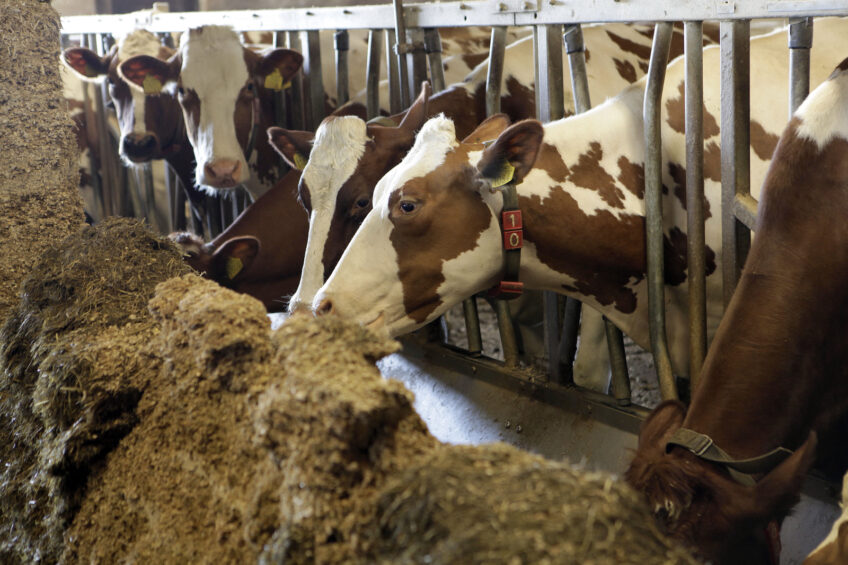
The term mycotoxins refers to a large, diverse group of chemical substances, all produced by different fungi but with very different toxic effects. The actual cause of their occurrence is not fully understood but mycotoxin problems are more pronounced under less-than-ideal production and storage conditions of grains and feed.
Unlike monogastric animals, ruminant nutrition has to ensure a good intake of roughage to keep the rumen in good condition. The complexity of these diets which include concentrates and fibre sources and the fact that fibre sources are a potential source of mycotoxins, increases the risk of exposure to more than one mycotoxin. The interaction between mycotoxins often leads to synergistic effects, when the negative effect of one mycotoxin is amplified by the presence of another. This is especially true in the case of fusariotoxins. Fusarium graminearum and Fusarium culmorum are known to produce several different fusariotoxins under similar conditions, for example, zearalenone (ZEN) and deoxynivalenol (DON), which are also known to interact synergistically in the animal.
High-yielding cows have higher mycotoxin uptake
The assumption of an efficient inactivation of mycotoxins in the rumen relies on the fact that feedstuffs are retained in this ‘compartment’ long enough to allow proper activity of rumen microorganisms. But this is becoming more difficult to guarantee as animals are fed increasing quantities of feed in order to increase milk yields. With large amounts of feed comes the risk of increased mycotoxin exposure, higher passage rates and less time available for proper feed digestion. Complete mycotoxin degradation in the rumen is not possible.
Various mycotoxins are able to modify the rumen microflora as they exert antimicrobial, antiprotozoal and antifungal activity. In practical terms, this means that mycotoxins that are not degraded by the rumen microflora will escape the rumen and reach the site of absorption intact. These mycotoxins will then be absorbed by the organism just as in the case of monogastrics and the animal will be encumbered with a high mycotoxin load. Reduced ruminal motility, decreased dry matter intake, acid detergent fibre and starch digestion are some other negative impacts reported due to the ingestion of mycotoxin-contaminated feed.
Scientific studies demonstrate that only a few mycotoxins are subject to enzymatic cleavage by rumen micro-organisms. Only up to 42% of aflatoxins are rumen degradable; thus up to 58-100% may still be absorbed by the animal. Nonetheless, other scientists did not find any degradation of this mycotoxin in the rumen.
Mycotoxins impair dairy fertility
Since fertility and milk yield are directly related parameters, all factors disrupting fertility have a negative economic impact on herds. ZEN is an estrogenic metabolite that has been reported to occur in silage (Figure 1), corn, wheat, barley, oats, sorghum, hay and soybean worldwide. Chemically, ZEN shows a similar configuration to the female hormone estradiol, enabling it to connect to specific cell receptors. Thus, ZEN causes estrogenic effects as well as abnormal estrous cycles which ultimately impair fertility. Besides ZEN, other mycotoxins have been shown to cause fertility problems in dairy animals. Reduced fertility in dairy cattle is also caused by ergot alkaloids. Low conception rates, cystic ovaries and uterine infection were observed in dairy animals consuming aflatoxin-contaminated diets.
Mycotoxins impact milk production and lead to toxic residues in milk
In the case of aflatoxins, the most worrying effect is their carry-over into milk as aflatoxin M1 (AfM1). Aflatoxins are considered carcinogenic by the Institute of Applied Research on Cancer. Although the maximum amount of aflatoxin B1 on dairy feed is well regulated, if the carry-over rates ranging from 1.8 to 6.2% as found in the literature are taken into account, the maximum amount of contamination allowed in dairy rations to meet those requirements would be 1.78 ppb which is well below the 5 ppb allowed by the European Commission Regulation.
 Figure 1. Biomin worldwide mycotoxin survey. Analysis results for silage samples tested in 2012 and 2013. Fusarium toxins, such as zearalenone (ZEN), deoxynivalenol (DON) and fumonisins (FUM) were the most prevalent mycotoxins. Figure 1. Biomin worldwide mycotoxin survey. Analysis results for silage samples tested in 2012 and 2013. Fusarium toxins, such as zearalenone (ZEN), deoxynivalenol (DON) and fumonisins (FUM) were the most prevalent mycotoxins. |
Mycotoxins increase the incidence of metabolic problems in dairy animals
Figure 2 provides an overall picture of the effects of mycotoxins in dairy cattle. The most common and difficult challenges to identify occur when rations contain low levels of mycotoxins and the health effects are subclinical. In dairy cattle sub-clinical effects of mycotoxins are often overlooked due to the fact that a single herd is made up of individual cows in different stages of production and/or age, impairing the observation of a reduction in milk production which indicates the subclinical effects of mycotoxins.

The presence of mycotoxins in feed is very often connected with increased incidences of metabolic disorders such as ketosis, retained placenta, displaced abomasum, mastitis, metritis, lameness, elevated somatic cell count and consequently decreased milk production. Subclinical mycotoxicoses decrease profitability by lowering milk production and quality and finally increasing expenses from ineffective veterinary therapies.
Several strategies are needed to counter a wide range of mycotoxins
Good silage management is of prime importance to avoid the growth of moulds and thereby prevent mycotoxin formation. Excellent compaction as well as an airtight closing of the silo has a strong impact on mould growth and mycotoxin formation. Good quality silages, containing residual sugar and/or starch, have the highest risks of mould and mycotoxin contamination upon exposure to air.
In contrast, poorly preserved silages with little or no residual sugar are usually relatively stable on exposure to air, probably because they contain elevated levels of acetic acid, which is known to inhibit the development of yeasts and moulds.
To solve this problem, heterofermentative silage inoculants have been developed, which increase the acetic acid contents of silages and at the same time preserve the energy contents of silages. Tests with silage inoculant BioStabil show improved fermentation and strengthened aerobic stability.
Recently, a novel heterofermentative Lactobacillus kefiri silage inoculant strain was granted EU registration. The combined use of this novel strain with the current Lactobacillus brevis heterofermenter and L. plantarum homofermenter was proven to further improve feed safety and quality. As the bacterial metabolisms of L. brevis and L. kefiri are different, efficiency and efficacy are improved compared to traditional methods of increasing aerobic stability.
Mycotoxin risk management
Avoiding mycotoxin formation in silages must begin in the field, should continue in the silage production process and end with the correct management of the open silo. Silage additives help to inhibit further growth of mould.
However, in spite of all these prevention steps, already existing mycotoxins produced in the field will persist in the trough and cause hazardous effects to the animals ingesting them. An effective mycotoxin risk management programme developed by Biomin is crucial to avoid economic losses due to mycotoxins in animal husbandry. Well-designed product lines such as Biomin BioStabil and Mycofix are the result of long term research focused on solving preservation and mycotoxins’ troubles on farms.
Carefully selected bentonites are able to adsorb the carcinogenic aflatoxin B1 in the gastrointestinal tract of animals and therefore reduce the regulated aflatoxin M1 content in the milk and protect the cow from its toxic effects.
Ergot alkaloids and endotoxins can also be adsorbed efficiently. The bentonite used in the Mycofix product line by Biomin recently received a positive vote from the EU Standing Committeee on the Food Chain and Animal Health and will be the first product ever authorised in the EU for “aflatoxin-binding” in ruminants.
However, other agriculturally relevant mycotoxins such as deoxynivalenol and zearalenone cannot be sufficiently adsorbed and therefore need to be biologically degraded by the respective enzymes included in the Mycofix product line.
Most grains and feedstuffs are afflicted by a wide variety of mycotoxin types, and not all varieties of mycotoxins can be destroyed with one deactivation agent.
The Mycofix Plus product line from Biomin combines three modes of action.
1. Adsorption
2. Biological degradation of non-adsorbable mycotoxins, and
3. Protection of the liver and immune system.
This provides the most thorough means of deactivating the toxic effects of mycotoxins.
References available on request.
Join 13,000+ subscribers
Subscribe to our newsletter to stay updated about all the need-to-know content in the dairy sector, two times a week.


